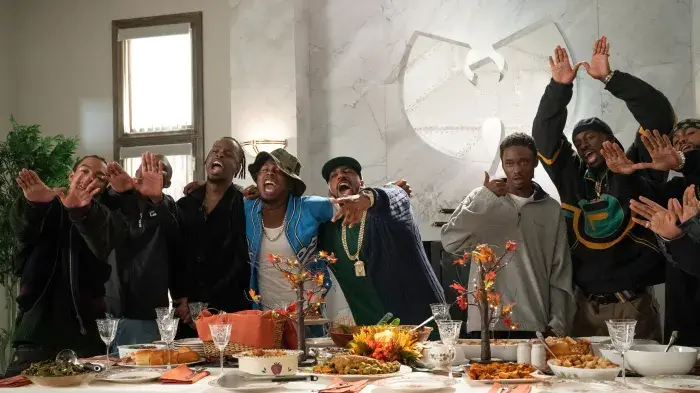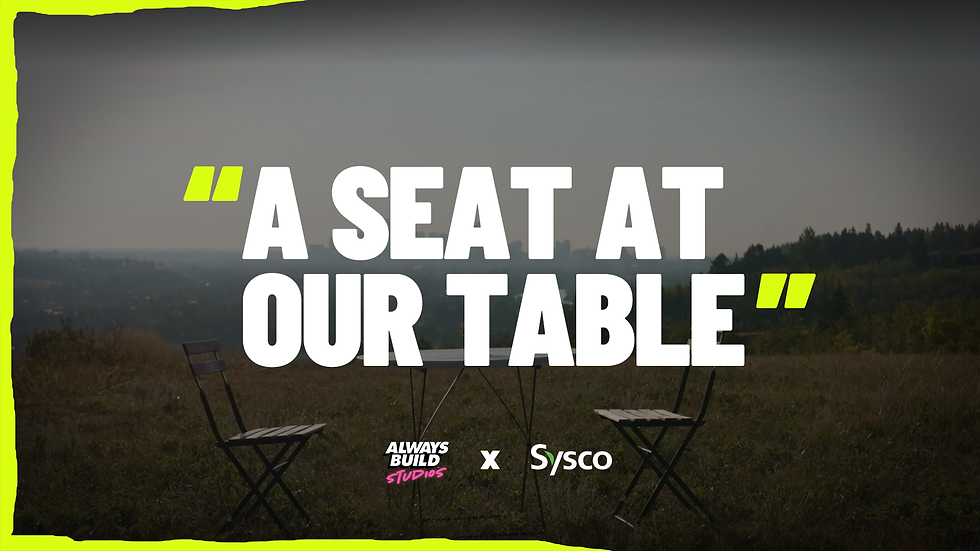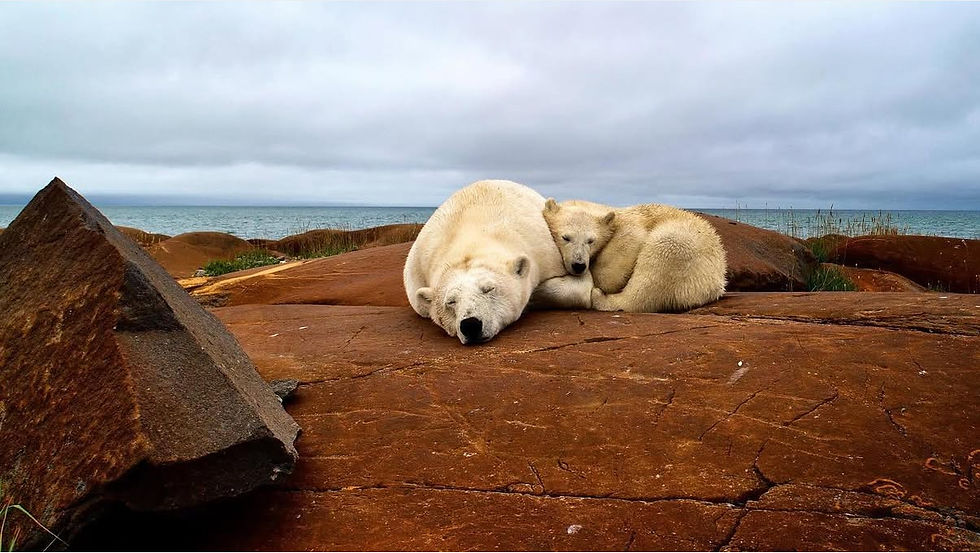Wu-Tang Clan: A Masterclass in Brand Storytelling
- Always Build

- Aug 12
- 5 min read
Great brands begin with great stories—and Wu-Tang Clan’s story is the stuff of hip-hop legend. In the early 1990s, Robert Diggs (aka RZA) envisioned a rap group like no other: a “brandscape” of nine distinct artists, unified under one banner. After a failed solo run as Prince Rakeem, RZA regrouped with friends and cousins from Staten Island, naming the crew after a 1983 kung fu film, Shaolin and Wu Tang. It reflected their love of martial arts cinema and became the foundation for a hip-hop mythology.
From the start, Wu-Tang was more than a rap group. It was a business venture and narrative universe rolled into one. RZA positioned himself as the group’s CEO and creative director, making a pact with the crew: he would control Wu-Tang’s vision for five years, and in that time, he’d make each member a successful solo artist. This five-year plan was RZA’s high-stakes chess game—designed to rewrite hip-hop economics while launching a new creative empire.

Crucially, RZA’s plan centered on authentic storytelling. Rather than chase radio hits or smooth production, Wu-Tang embraced raw, lo-fi beats, kung fu samples, and lyrics steeped in street slang, comic books, chess metaphors, and Five-Percenter teachings. Their debut album, Enter the Wu-Tang (36 Chambers), was gritty, cinematic, and wildly original. It didn’t just reflect life in the projects—it mythologized it. The kung fu elements added mystique, while the Clan’s realness gave it emotional weight.
The album broke through with fans because it felt authentic and epic. Hardcore hip-hop heads respected the lyrics; suburban teens were drawn to the mythos. RZA had bet that a bold, high-concept story rooted in real experience would build something greater than music: a brand.

Brand Identity: Built for the Streets, Styled for the World
Wu-Tang understood brand identity from day one. Their name was memorable, their look was cohesive, and their messaging was loud and clear. They presented themselves as a shadowy brotherhood of street warriors from “Shaolin” (Staten Island), complete with hoodies, masks, aliases, and a hardcore ethos.
The most powerful element was their logo: the iconic yellow-and-black “W,” designed by their friend Mathematics. This stylized W became their banner—appearing on album covers, flyers, jackets, and walls across NYC. It was more than a logo; it was a symbol of allegiance. Like a superhero insignia or a gang crest, the “W” marked your tribe. Fans wore it proudly, and soon, it was everywhere.
That consistency made the brand feel bulletproof. Even with nine members, Wu-Tang had a unified sound and visual aesthetic. Credit RZA’s production for this: from 1993 to 1997, he oversaw nearly every track across the group’s and solo albums. Dusty soul loops, kung fu snippets, and dark piano lines gave everything a Wu-Tang flavour.
For marketers, the lesson is clear: clarity and consistency matter. Wu-Tang didn’t try to please everyone. They doubled down on who they were—grimy, smart, and weird—and in doing so, they stood out in a sea of sameness.

Brand Architecture: Nine Characters, One Universe
Wu-Tang’s most genius move may have been how they branded their members. Each MC was a character in the larger Wu saga, with their own distinct appeal. RZA once explained it like casting a film:
GZA was the intellectual—he’d pull the college crowd.
Raekwon and Ghostface were the hustlers—perfect for the streets.
Method Man was charismatic and smooth—he’d attract the masses.
Ol’ Dirty Bastard (ODB) was chaos incarnate—magnetic and unhinged.
Every member had aliases (Tony Starks, Johnny Blaze, The Genius) and backstories. Fans could follow their favourite’s solo career without ever leaving the Wu-Tang world. It was a decentralized brand model decades before the MCU or K-pop “units.” Each solo album was like a spin-off series—unique but still part of the Wu-Tang universe.
This segmentation widened Wu-Tang’s reach. Hardcore fans loved Ghost and Rae’s street realism. More mainstream listeners gravitated to Method Man. ODB drew headlines and cult love. It was marketing without market research—they just knew their roles.
Marketers today can learn from this: know your audience segments, and serve them characters they can relate to under one brand vision. Just like a strong product line, every Clan member had a purpose.

Building Culture Through Language and Lore
Wu-Tang didn’t just create music—they created culture. They spoke in slang that fans learned and adopted: C.R.E.A.M. (“Cash Rules Everything Around Me”), “Shaolin,” “chessboxin’,” “Mathematics,” “protect ya neck.” They sampled kung fu films and built their own coded universe. Understanding Wu-Tang felt like joining Wu-Tang.
This sense of insider culture forged fierce loyalty. You weren’t just listening to a group—you were learning the language of a movement. It was immersive, tribal, and contagious.
Today, brands chase community with Discord servers and hashtags. Wu-Tang did it with symbols, slang, and storytelling. They made their fans part of the story.

Merch, Media, and Mastery of Extension
Wu-Tang were early masters of brand extension. In 1995, they launched Wu Wear—one of the first hip-hop clothing lines. Their “W” logo hit T-shirts, hoodies, and jeans, eventually selling in major retailers like Macy’s and bringing in millions.
They also explored comics, video games (Wu-Tang: Shaolin Style), and film. RZA scored Kill Bill, Method Man starred in Hollywood movies, and the Wu brand spread into every corner of pop culture. They even launched a “Wu-Fam” of affiliate rappers—an organic franchise model that gave new acts the Wu-Tang co-sign and visual identity.
Each move extended the brand without diluting it. That’s the trick: diversify, but stay rooted. Everything Wu-Tang touched still felt like Wu-Tang.

Brand Legacy: Still Nothing to Mess With
Wu-Tang’s brand didn’t fade with time—it evolved. In 2018, they performed a Tiny Desk Concert that went viral. In 2022, their gear showed up in Fortnite. Their docuseries Of Mics and Men aired on Showtime. Their story still resonates because the core has never changed.
Even their most controversial move—the one-of-one album Once Upon a Time in Shaolin—proved the power of brand mystique. It was treated like fine art and sold for millions. Fans debated it, but the message was clear: Wu-Tang is still thinking ahead.

Final Takeaway: A Blueprint for Brand Builders
Wu-Tang’s rise wasn’t accidental. It was vision, strategy, and storytelling at its rawest. For marketers, their brand offers timeless lessons:
Lead with story: Origin, myth, and mission matter.
Be distinct: Don’t sand down your edges.
Build culture: Language, symbolism, and belonging beat algorithms.
Segment smart: Characters can expand your reach without fracturing your brand.
Diversify, but stay true: Grow into new spaces without losing your core.
Play the long game: RZA planned five years ahead. You should too.
“Wu-Tang is forever” isn’t just a lyric—it’s a brand strategy that still hits hard. And in a world of noise, gimmicks, and fast trends, Wu-Tang reminds us: the strongest brands are built like clans—rooted in story, driven by purpose, and united by something deeper.



Comments